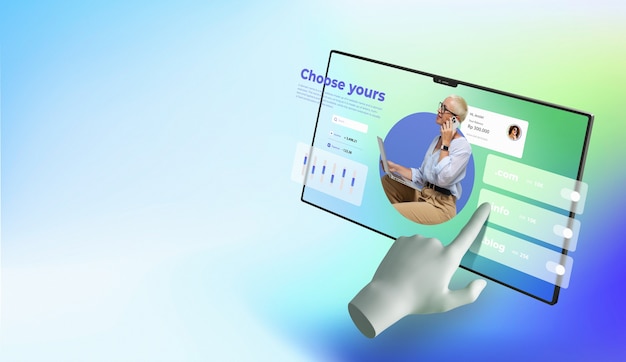Building for web accessibility is more than just an ethical responsibility—it’s an investment in a better, more inclusive user experience. When websites are designed to be accessible, they can be enjoyed by all users, including those with disabilities. Web accessibility focuses on ensuring that digital content is usable by everyone, regardless of their physical or cognitive abilities. Accessible design isn’t just about compliance with legal standards, it’s about creating a smoother, more intuitive experience that benefits all visitors. In this blog, we will explore how building for web accessibility improves the overall user experience, driving both inclusivity and performance.

What is Web Accessibility?
Web accessibility refers to the practice of designing websites so that people with disabilities can use them effectively. This includes making sure that websites are navigable via screen readers, keyboard controls, and other assistive technologies. Accessibility is not a “one-size-fits-all” approach, as it involves considering various disabilities such as visual, auditory, physical, and cognitive impairments. By following guidelines such as the Web Content Accessibility Guidelines (WCAG), developers can create websites that accommodate a diverse range of users. Implementing accessibility standards can greatly enhance the user experience by ensuring that all individuals can access and interact with the site without barriers.
Enhanced Usability for All Users
When websites are built with accessibility in mind, they tend to be more user-friendly for everyone. Accessible design principles like clear navigation, properly structured content, and good color contrast not only benefit people with disabilities, but also improve the site’s usability for the general population. By organizing content in a predictable and easy-to-follow way, developers enhance the user experience, making it simpler for visitors to navigate. These improvements lead to greater user satisfaction, higher engagement, and increased likelihood of return visits. Accessible websites don’t just meet legal standards—they create a better experience for all users.
Impact on SEO and Search Engine Rankings
Accessible websites tend to rank better on search engines because they’re built with semantic HTML and well-structured content. Search engines like Google appreciate clear, organized sites that make it easy for their crawlers to index content. For example, alt text for images provides both accessibility for users with visual impairments and improved SEO for image search optimization. Moreover, features like accessible navigation and easily readable fonts contribute to higher engagement metrics, such as longer time on page and lower bounce rates. By incorporating accessibility practices, websites can not only improve their user experience but also boost their SEO performance, driving more organic traffic.
Compliance with Legal Requirements
As digital accessibility becomes more important, compliance with legal regulations is a growing concern for businesses. In many regions, including the U.S. and Europe, failing to make websites accessible can lead to legal repercussions. Web accessibility laws such as the Americans with Disabilities Act (ADA) in the U.S. and the European Accessibility Act aim to protect individuals with disabilities from discrimination in digital spaces. By proactively building for accessibility, businesses can mitigate the risk of legal action, ensuring that their websites meet necessary standards. This commitment to accessibility not only demonstrates social responsibility but also safeguards the business from potential lawsuits.
7 Benefits of Web Accessibility
- Increased user reach by accommodating people with disabilities
- Improved SEO through structured content and semantic HTML
- Legal compliance, avoiding potential lawsuits
- Better user engagement and satisfaction
- Enhanced usability across all devices and browsers
- Higher website traffic due to improved visibility
- Socially responsible business practices that promote inclusivity
Watch Live Sports Now!
Dont miss a single moment of your favorite sports. Tune in to live matches, exclusive coverage, and expert analysis.
Start watching top-tier sports action now!
Watch NowKey Web Accessibility Best Practices
- Use alt text for all images
- Ensure high contrast between text and background
- Implement keyboard navigability for all interactive elements
- Provide captions and transcripts for multimedia content
- Structure content with proper headings and logical flow
- Design for mobile-first accessibility
- Test with assistive technologies to identify barriers
| Accessibility Feature | Benefits | Impact on User Experience |
|---|---|---|
| Keyboard Navigation | Improves accessibility for users with mobility impairments | Allows users to navigate without a mouse, enhancing ease of use |
| Text-to-Speech | Assists users with visual impairments | Ensures that all content can be consumed audibly, offering a better experience for visually impaired users |
| Clear Color Contrast | Improves readability for users with color blindness | Ensures content is readable by a wider audience, reducing cognitive strain |
“Accessible design is not just a legal requirement, it’s an opportunity to enhance the user experience for everyone. By prioritizing accessibility, businesses make a positive impact on society while reaping the benefits of better usability, increased traffic, and higher engagement.”
In summary, building for web accessibility is a fundamental practice that enhances the overall user experience. It improves usability for all users, boosts SEO, ensures legal compliance, and promotes inclusivity. Implementing accessible design benefits not only individuals with disabilities but also enhances the overall functionality and reach of your website. By following best practices, you can create an accessible, user-friendly site that provides an exceptional experience for everyone. Share this article and start prioritizing accessibility in your web projects today to see the lasting impact on both your users and business.